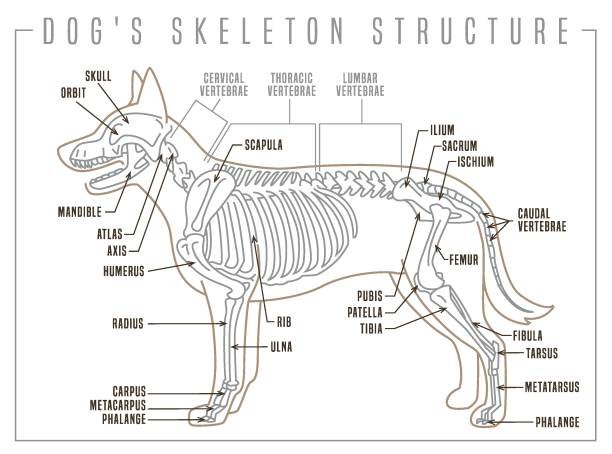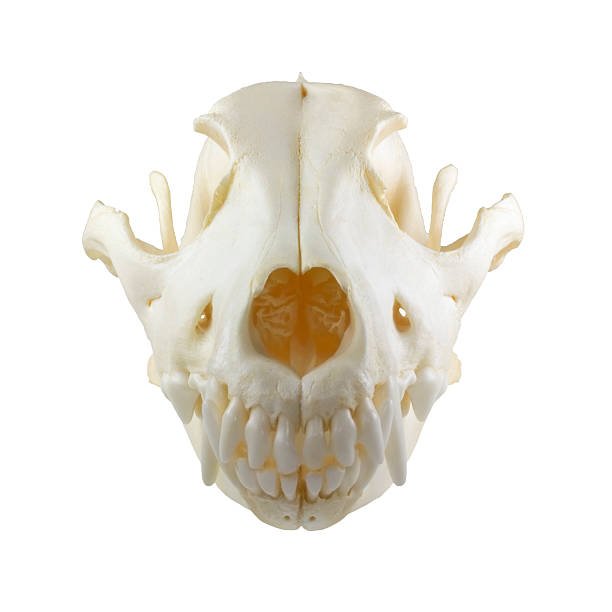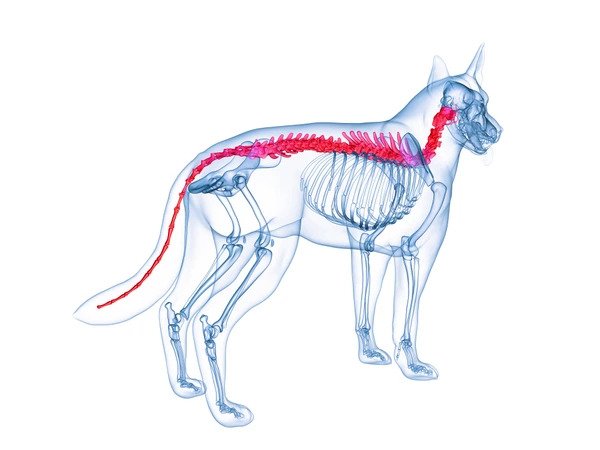How Many Bones Does a Dog Have? Comparing Dog and Human Skeletons
Dogs are amazing animals that come in a variety of shapes and sizes. From the tiny Chihuahua to the giant Great Dane, dogs have fascinated humans for centuries with their loyalty, intelligence, and personality. But have you ever wondered how many bones does a dog have? And how does their skeleton compare to ours? In this article, we will explore the anatomy of dogs and answer these questions and more.
The Dog Skeleton
The dog skeleton is composed of two main parts: the axial skeleton and the appendicular skeleton. The axial skeleton includes the bones of the head, neck, spine, ribs, and sternum. The appendicular skeleton includes the bones of the limbs, pelvis, and tail. On average, dogs have 321 bones in their body, which is about 100 more than humans. However, this number can vary depending on the length of their tail, which can have anywhere from 6 to 23 bones. Dogs with longer tails typically have two extra bones than dogs with shorter tails.

The dog skeleton is adapted for running, jumping, and hunting. Dogs have more bones in their spine than humans, which gives them more flexibility and agility. They also have more bones in their limbs, which allows them to move faster and more efficiently. Dogs have four toes on each foot, with a fifth toe called the dewclaw on the inner side of their front legs. Some breeds also have dewclaws on their hind legs, which are vestigial and serve no purpose. The dewclaw is a remnant of an ancient ancestor that had five toes on each foot.
The Dog Skull
One of the most distinctive features of dogs is their skull. The shape and size of the dog skull vary greatly among different breeds, but they all share some common characteristics. The dog skull consists of two main parts: the cranium and the mandible. The cranium is the part that encloses the brain and the sensory organs, such as the eyes, ears, and nose. The mandible is the lower jaw that holds the teeth and the tongue.
The dog skull has 50 bones, which is 10 more than humans. The extra bones are mostly found in the ear and the hyoid apparatus, which are structures that support the tongue and the larynx. The dog skull also has more teeth than humans, with 42 teeth in total. The dog teeth are divided into four types: incisors, canines, premolars, and molars. The incisors are used for biting and nibbling, the canines are used for tearing and holding, the premolars are used for shearing and slicing, and the molars are used for grinding and crushing.
The shape of the dog skull can be classified into three main types: dolichocephalic, brachycephalic, and mesocephalic. Dolichocephalic dogs have a long and narrow skull, with a small stop. A stop is the angle at which the forehead and the snout meet. Examples of dolichocephalic breeds are Greyhounds, Whippets, and Collies. Brachycephalic dogs have a short and wide skull, with a large stop. Examples of brachycephalic breeds are Bulldogs, Pugs, and Boxers. Mesocephalic dogs have a medium-sized skull, with a moderate stop. Examples of mesocephalic breeds are Beagles, Labradors, and German Shepherds.

The Dog Spine
The dog spine is a series of bones called vertebrae that run from the base of the skull to the tip of the tail. The dog spine has 50 vertebrae, which is 14 more than humans. The extra vertebrae are mostly found in the tail, which can have up to 23 vertebrae. The dog spine is divided into five regions: cervical, thoracic, lumbar, sacral, and caudal. The cervical region consists of 7 vertebrae that support the head and the neck. The thoracic region consists of 13 vertebrae that attach to the ribs and the sternum. The lumbar region consists of 7 vertebrae that support the lower back and the abdomen. The sacral region consists of 3 vertebrae that fuse together to form the sacrum, which connects to the pelvis. The caudal region consists of the remaining vertebrae that form the tail.

The dog spine is flexible and strong, allowing dogs to bend, twist, and turn their bodies. The dog spine also protects the spinal cord, which is a bundle of nerves that connects the brain to the rest of the body. The spinal cord is responsible for transmitting signals that control movement, sensation, and reflexes. The spinal cord is surrounded by a protective layer of tissue called the meninges, which also contains cerebrospinal fluid that cushions and nourishes the spinal cord.
How Bones and Muscles Make Your Dog Move
Our furry friends amaze us with their agility and grace, whether it’s a playful leap or a determined walk. But have you ever wondered how their bodies achieve such incredible feats? The secret lies in the incredible teamwork between their bones and muscles!
Think of your dog’s bones as a sturdy framework, providing structure and support. These lightweight yet strong components hold everything together. But bones on their own are like statues – motionless. This is where the muscles step in, acting as the engines that drive movement.
There are two main types of muscles:
- Smooth muscles: These are the silent workers, found in your dog's internal organs like the stomach and bladder. They work tirelessly and automatically, without your dog's conscious control.
- Striated muscles: These are the ones responsible for your dog's impressive movements. Attached to the bones by tough tendons, they contract and shorten when your dog sends a "go" signal from their brain through the nervous system. This pulling action moves the bones at the joints, creating the diverse motions we see, from a gentle tail wag to a powerful jump.
It’s important to remember that moving your dog’s body requires a lot of energy. Just like an engine needs fuel, muscles need energy from food to contract and generate movement. So, ensuring your dog has a balanced and nutritious diet is crucial for their strength and mobility.
This intricate collaboration between bones and muscles is what allows your dog to run, play, and explore the world with such joy. It’s a truly remarkable testament to the power of teamwork within the body!
Human vs. Canine Bone Structure
Although humans and dogs are both mammals, there are key differences in our skeletal structures. These differences are a reflection of our evolutionary histories and physical adaptations for different lifestyles. Here’s a breakdown outlining the key differences:
Shape and Function
- Femur: The femur, or thigh bone, is more curved in dogs than in humans. This curvature provides greater leverage for running and jumping.
- Scapula: The scapula, or shoulder blade, is located on the side of the chest in dogs, whereas it's positioned on the back in humans. A dog's laterally placed scapula offers more flexibility for running movements.
- Clavicle: Humans have a clavicle (collarbone) which provides stability and support to the shoulder joint. Dogs do not have this bone, allowing for a greater range of motion in their forelimbs.
Human Bone Structure
Dog anatomy
Number and Density of Bones
- Total Bones: Humans have an average of 206 bones, while dogs have approximately 320 depending on breed and tail length. This difference is primarily due to the extra bones in a dog's tail and paws.
- Bone Density: Canine bones are generally denser than human bones. This increased density provides greater strength and durability, necessary for the high-impact activities that dogs engage in.
Skull and Teeth
- Skull Shape: A human skull is proportionally larger to accommodate our larger brains and sits in a more vertical position. A dog's skull is elongated with a protruding snout, designed for powerful bites and enhanced sense of smell.
- Dentition: Humans have a varied set of teeth for both cutting and grinding food, reflecting our omnivorous diet. Dogs have teeth that are primarily designed for tearing and ripping, as their diet is ancestrally more carnivorous.
Adapting to Our Environments
Dogs are amazing creatures that have a complex and diverse skeletal system. The number of bones in a dog’s body depends on the length of their tail, but on average, dogs have 321 bones, which is about 100 more than humans. The dog skeleton is divided into two main parts: the axial skeleton and the appendicular skeleton. The dog skull has 50 bones, which vary in shape and size among different breeds. The dog spine has 50 vertebrae, which are flexible and strong. The dog skeleton is adapted for running, jumping, and hunting, and it also protects the vital organs and the nervous system. Dogs are truly remarkable animals that deserve our respect and admiration.
Conclusion
Dogs are amazing creatures that have a complex and diverse skeletal system. The number of bones in a dog’s body depends on the length of their tail, but on average, dogs have 321 bones, which is about 100 more than humans. The dog skeleton is divided into two main parts: the axial skeleton and the appendicular skeleton. The dog skull has 50 bones, which vary in shape and size among different breeds. The dog spine has 50 vertebrae, which are flexible and strong. The dog skeleton is adapted for running, jumping, and hunting, and it also protects the vital organs and the nervous system. Dogs are truly remarkable animals that deserve our respect and admiration.
FAQ
On average, how many bones does a dog have?
Why do dogs have more bones than humans?
Do all dog breeds have the same number of bones?
Is it important to know how many bones my dog has?
Do Cats Get Cold? Symptoms, Risks, and How to Keep Them Warm
m-psi-"> 6 February 2024 1 Comment
What Triggers Seizures in Dogs: Expert Insights and Tips
m-psi-"> 2 July 2024 No Comments
In the Lap of Luxury: Adopt a Lilac Persian Cat
m-psi-"> 17 December 2023 No Comments


